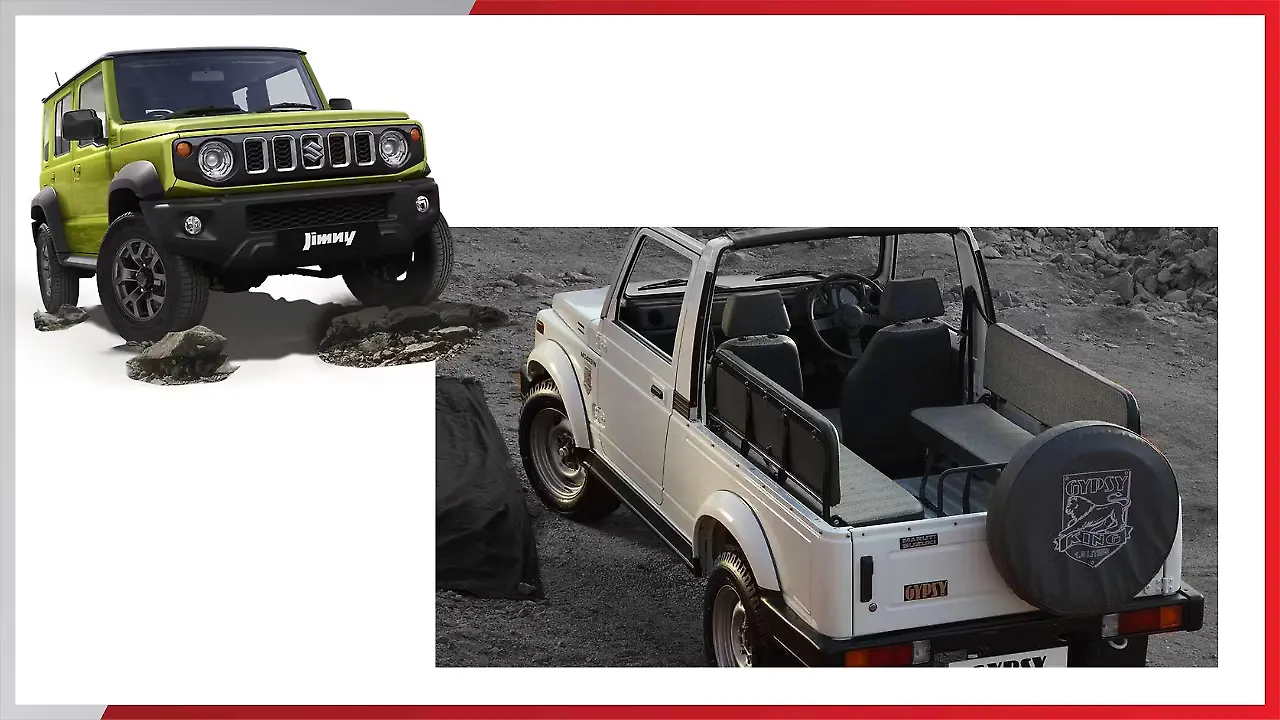
Most iconic auto brands worldwide have been lifestyle vehicles which occupy a special place in everyone’s hearts.
An example of one such is Suzuki Motor’s Jimny that, over the last four decades, continues to be a big draw thanks to its compact size backed by immense capability. It is now set to make its India debut with its fourth generation avatar in July.
First a rewind to many decades earlier when Japan was still reeling from the aftermath of World War 2. Mobility was one of the focus areas for the government to bolster the economy and this initiative sowed the seeds for the 'kei car’. The concept kicked-off in the early 1950s as a utilitarian transport option for private owners and also offering small businesses a convenient and inexpensive workhorse.
Small Is Beautiful
These small cars got their name from their dimensions, weight and tiny engines. The Kei vehicles included cars, trucks, and even vans. The Jimny, however, was the first in the segment to offer 4WD. Interestingly, it was not a Suzuki original but based on the Hope Motor Company ON360, developed in 1967. HMC later sold the design to Suzuki in 1968 and thus was born Jimny.
The Japanese automaker replaced the Mitsubishi 359 cc air-cooled two-stroke ME24 engine (which powered the HMC ON360) with the Suzuki FB air-cooled 359 cc twin-cylinder two-stroke engine. It started out with 25 hp and eventually upgraded to 27 hp.
The lifestyle kei car was built on a ladder frame chassis and featured a part-time four-wheel-drive system. All these changes clearly worked given that HMC struggled to sell the ON360 but the resurrected Jimny ended up being a winner both in Japan and elsewhere.
By the time the second generation of the Jimny was showcased in 1981, it had already become a well-known brand and Suzuki decided to take it a notch higher globally. While it still retained the ‘kei car’ characteristics for the Japanese market, its manufacturer decided to increase its size and sell it to other brands across the globe in the form of Chevrolet Samurai and Holden Drover. All necessary changes were made to be in sync with the needs of different markets.
Global Footprint
Beyond the increase in size, the overseas Jimny also saw an upgrade in its powertrain. While the LJ50 two-stroke engines were still used in the JDM Jimny, some export models used larger 8-valve engines housed in larger and longer frames.
It was around this time that the Gypsy brand became synonymous with the Indian armed forces, politicians and cops. It also built up a sizable fan base among enthusiasts thanks to its impressive capabilities, ruggedness, and the fact that it was a ‘Maruti’ product.

Gypsy was the then Maruti Udyog's third offering in India in 1985, following the SS80 hatchback and the Omni passenger van. Its 970-cc carburetted F10A engine produced 45 hp and was mated to a four-speed gearbox. Later in 1996, the Esteem 1.0 L petrol engine was added and it was available for a decade before being replaced by a 1.3 L petrol mill with fuel injection to meet stricter emission standards.
The Gypsy remained in the Indian market for nearly 35 years till 2019 before it was discontinued, making it one of the longest running brands in the country’s automotive history. While it continues to be popular among enthusiasts, the vehicle is mostly associated with the Indian armed forces.
Army’s Pet Brand
The Army ordered the first Gypsy 4x4 vehicles in 1991 and, since then, increased the fleet to over 35,000 units featuring the olive green paint shade. Maruti received its single-largest order from the Army for over 4,000 Gypsy vehicles in 2017 and the final order tally was 2,071 units in 2018.
The Indian Army favoured the Gypsy for a variety of reasons, one of which was its lightweight. The soft top version weighs only 985 kg and the hard top 1,020 kg. The lightweight made it more agile and allowed the Gypsy to navigate through even the most difficult terrain.
The weight also helped in easy transportation to higher altitudes by lower powered helicopters or aircraft. It also helped the vehicle steer clear of deep snow or slush. However, the Gypsy’s light weight did not prevent it from carrying heavy loads. It had a payload capacity of 500 kg which allowed to carry a load half its weight. The Gypsy’s shorter wheelbase and narrow wheel track of 1,310 mm also facilitated tight manoeuvres. Spares were easily available and repairs were simple too.
Enter The New Jimny
While the Gypsy was based on the second generation Jimny, Suzuki unveiled the fourth generation globally in 2018. With three doors and the same small size and 4X4 capabilities as the original Jimny, it was first showcased in India at the 2020 Auto Expo.

Then came the pandemic followed by the lockdowns and it was at the recently concluded 2023 Auto Expo that Maruti Suzuki displayed the five-door model of the fourth generation Jimny. Set to go on sale from July, it will be powered by a 1.5 L K15B petrol engine with 103 hp and 134 Nm of torque.
Bookings began in January and the number is nearly 25,000 thus far. Maruti Suzuki is clearly betting big on the Jimny along with the Fronx that was also showcased at the Auto Expo. Earlier in an interaction with Mobility Outlook, Shashank Srivastava, Senior Executive Officer – Marketing and Sales, said the company was targeting at least 25% of the SUV market with these two products.
Maruti is betting big on these offerings to boost its market share and the booking response to the Jimny is clearly an encouraging sign. According to Srivastava, if the company was able to “hit the 35% mark”, it would help it reach an overall market share of beyond 50% in passenger vehicles.
Also Read
Maruti Suzuki's 40-Year Journey Fuels Its Vision To Grow Swiftly